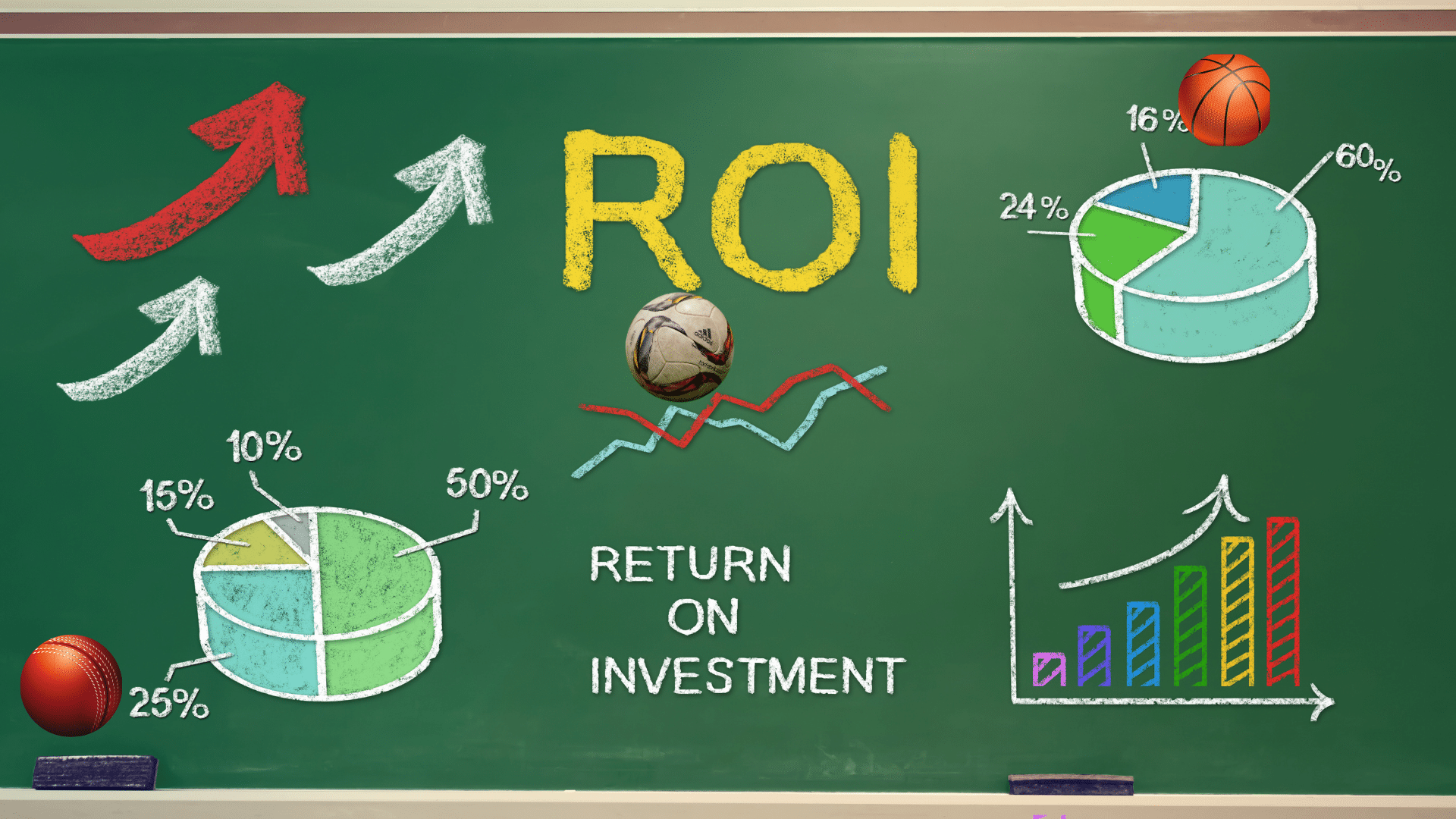Every Premier League match generates millions of data points (e.g., player speed, ball trajectory, heat maps, you name it), and clubs are cashing in. Those numbers are helping managers tweak tactics or scout new signings, but more than that, they’re becoming a business asset.
And it’s not just clubs getting serious about data.
In February 2025, FIFPRO Technologies BV, a new division of the global union for professional footballers FIFPRO (The Fédération Internationale des Associations de Footballeurs Professionnels), announced a long-term partnership with Sports Data Labs Inc. The focus was on the benefits of technology for players. The goal was to launch a global platform that allows players to collect, control, and monetise their performance data on and off the pitch.
These innovations around data use are a result of a broader shift.
Over the past few years, the sports industry has quietly transformed. Data analytics now shapes everything, from recruitment and player development to fan engagement and even sponsorship strategy. And as fan behaviour has evolved, so have the monetisation opportunities.
Fans no longer just tune in for 90 minutes of live action. They want short-form highlights, tactical breakdowns, behind-the-scenes content, and personalised experiences. That opens up an entirely new revenue frontier for teams and leagues, but only if they can collect, organise, and make sense of the right data.
Executing well means analysing audience preferences, predicting what they’ll want to see next, and serving it up on the channels where they actually spend their time. Think personalised highlights, exclusive content drops, and targeted offers that convert casual viewers into loyal superfans.
It’s no longer just about winning games. Performance data is now a product and a revenue stream.
So how exactly do teams turn analytics into profit?
TL;DR: Key takeaways from this article
- Sports data is big business, from player tracking to fan engagement, teams are turning raw stats into real revenue streams.
- Monetisation happens in multiple ways, from licensing data to securing sponsorships.
- Challenges remain, especially around privacy, high-tech costs, and the need for trusted, standardised data, particularly in developing regions like Africa.
- Africa’s future is promising, with mobile-first engagement, smart stadium investments, and new partnerships leading the way.
How has sports performance analytics evolved?
Sports analytics, the practice of collecting, analysing, and interpreting data to support decision-making, has come a long way. What started as a way to gain an edge on the field has evolved into a sophisticated ecosystem powered by machine learning, artificial intelligence (AI), and big data processing.
Today, analytics touches nearly every part of the sports industry.
This shift has opened entirely new revenue opportunities. By understanding performance data and fan behaviour, teams have been able to improve their win-loss record. Now, they can also grow loyalty, increase merchandise sales, and create more targeted marketing campaigns.
First, it was big data.
At the heart of this shift is big data. The ability to process millions of data points allows teams to uncover patterns and insights that inform decision-making on and off the field.
For example, by tracking which types of content (e.g., highlights, player interviews, tactical breakdowns) resonate with different fan segments, teams can deliver personalised experiences that keep supporters engaged and spending.
Then, AI and machine learning brought improvements.
The process becomes even more powerful when combined with artificial intelligence (AI) and machine learning. These tools can identify patterns, make predictions, and automate content delivery.
Imagine a fan opening their team’s app to find a curated mix of articles, videos, and merchandise suggestions tailored specifically to their preferences. AI can even generate highlight reels and match summaries automatically, boosting engagement while reducing production costs.
Add cloud computing
To make all this possible, sports organisations rely on cloud computing. Cloud infrastructure provides the scalability and speed needed to store and analyse massive data sets, enabling real-time decision-making.
This might mean adjusting ticket prices dynamically as demand fluctuates or tweaking in-game strategies on the fly. At the same time, cloud solutions eliminate the need for expensive on-premise servers, freeing resources for even more data-driven initiatives.
Be proactive with ethics and privacy issues
With great data comes great responsibility. And with so much data in play, trust becomes critical.
Monetising fan data raises legitimate privacy concerns, making transparency and compliance with data protection laws non-negotiable. Teams that clearly communicate how data is used and seek explicit consent are more likely to maintain strong, lasting relationships with their fans.
Secure with blockchain technology
Finally, blockchain is adding another layer of security and trust. Its decentralised structure ensures that sensitive data, such as player health records or contract information, remains tamper-proof and accessible only to authorised parties.
Additionally, blockchain is opening new ways to engage and monetise fans through initiatives like fan tokens and NFTs. Teams can sell limited-edition digital collectables or create token-based access to exclusive experiences, building a direct, trusted connection with supporters.
The same technology can secure ticketing, merchandise sales, and sponsorship transactions, giving fans and commercial partners greater confidence in every interaction.
What counts as sports data?
When we talk about sports data, we’re talking about a wide range of information captured before, during, and after games. It usually falls into three big buckets:
- Performance data. Player stats, fitness levels, biometrics, speed, distance covered, heart rate, and injury risk indicators.
- Game data. Match stats like possession, shots on target, expected goals (xG), passing networks, heatmaps, and ball trajectory.
- Fan engagement data. Ticketing and attendance figures, merchandise sales, app usage, streaming data, and social media activity.
Why data is big business (and why sports teams should care)
The sports analytics market is exploding.
According to a MarketsandMarkets research report, the global sports analytics market is projected to grow from $2.29 billion in 2025 to $4.75 billion by 2030, at a CAGR of 15.7%. This surge reflects the fact that data has moved from a nice-to-have to one of the most valuable assets a sports team owns.
Teams can use it to their advantage in many ways.
Gaining and maintaining a competitive edge
Better data leads to better decisions. And better decisions mean more wins, higher revenue, and stronger fan engagement. Traditionally, analytics focused on on-field performance, but it now touches every part of a team’s business model.
Here’s how teams are using it:
- Player valuation and recruitment. Advanced metrics allow clubs to assess player performance beyond traditional stats. This helps teams negotiate smarter contracts, avoid overpaying for talent, and maximise return on salary investments.
- Injury prevention and load management. Predictive analytics can flag when an athlete is at risk of injury, allowing teams to adjust training loads before something goes wrong. Keeping star players healthy protects multi-million-dollar investments.
- Improve training programs. Data-driven training programs help athletes train smarter. Teams can also package these programs for amateur athletes and fitness enthusiasts, opening up a new revenue stream.
- Wearable tech and athlete data. Wearables capture everything from heart rate to acceleration. While primarily used for training, aggregated and anonymised data can be monetised: sold to research institutions, fitness companies, or even packaged as fan-facing content (e.g., live speed stats during games).
Turning fan data into revenue
One of the most profitable uses of sports analytics is actively deepening fan engagement and creating personalised experiences that keep supporters coming back and spending.
Teams can now:
- Delivering personalised content. Teams and leagues use data to deliver one-to-one experiences, from custom video highlight reels to personalised news feeds based on each fan’s favourite players, rivalries, and moments.
- Optimising ticket pricing in real-time. Dynamic pricing models adjust ticket prices based on opponent, day of the week, weather forecasts, and real-time demand. This ensures optimal stadium occupancy while maximising ticket revenue.
- Enhancing the stadium experience. Mobile app and stadium data help teams make live events smoother and more enjoyable, from reducing concession wait times to offering instant seat upgrades or exclusive in-stadium offers.
- Building engaging digital platforms. Fan engagement platforms and apps let teams interact with fans directly, gather behavioural data, and deliver targeted content, promotions, and interactive features. This opens doors to new sponsorship and advertising opportunities.
- Creating new fan products. Analytics power fantasy leagues, gamified second-screen experiences, and interactive live stats. All of them keep fans engaged beyond game day and monetise their attention through premium subscriptions or partnerships.
Transforming media and broadcasting
Data analytics is also changing how fans watch and interact with sports content through:
- Enhancing broadcasts with data. Advanced stats, live heatmaps, and AR overlays make broadcasts more immersive, attracting more viewers and boosting ad revenues.
- Powering over-the-top (OTT) and streaming platforms. League and team-owned streaming services use data to personalise content and ads, experiment with flexible subscription models, and reach global audiences, bypassing traditional TV networks.
- Driving smarter content creation. Data reveals what fans actually want to watch, helping media teams produce the most engaging social clips, blogs, and fantasy content to keep fans hooked between matches.
- Scheduling for maximum impact. By analysing viewership trends, teams and broadcasters can schedule games at peak times, target the right audiences, and optimise programming to increase ratings and advertising value.
Maximising sponsorship value
Sports analytics has completely simplified how teams and leagues package, price, and prove the value of sponsorship deals, turning what used to be guesswork into a science.
Teams can:
- Delivering hyper-targeted advertising. Teams can serve sponsors’ messages to the right audience at the right moment using fan demographic and behavioural data. They can do this through in-stadium LED boards, geo-targeted push notifications, or personalised ads on streaming platforms.
- Proving ROI with real metrics. Advanced analytics help sponsors measure exactly what they got for their spend. This kind of transparency builds trust, strengthens long-term relationships, and justifies higher sponsorship fees.
- Creating new sponsorship inventory. Insights from data unlock creative new assets, such as branded content series built around trending stats, player performance dashboards, or live data visualisations during broadcasts. These offer sponsors fresh ways to connect with fans.
How teams monetise performance data
Performance data is a business asset. Teams and leagues are finding multiple ways to turn player stats, tracking data, and analytics into hard revenue.
Here’s how:
1. Selling and licensing data
Teams package proprietary datasets, from player-tracking coordinates to biometric metrics, and sell or license them to broadcasters, fantasy leagues, betting platforms, and data aggregators.
- Broadcasters use enriched live data feeds for real-time graphics, commentary insights, and enhanced viewer experiences.
- Fantasy leagues and betting platforms rely on official stats to power fantasy scoring systems, odds-making, and in-play betting markets.
- Data aggregators and research firms pay for access to resell or generate secondary insights, creating recurring revenue streams.
2. Creating and improving products and services
Raw data is also turned into premium products or used to improve offerings that fans, analysts, and media partners will pay for. This can include:
- Real-time stat overlays and visualisations for broadcasters.
- Interactive dashboards and scouting tools for analysts.
- Subscription-based apps for superfans.
- Data-powered fan games, quizzes, and interactive experiences.
3. Building strategic partnerships and sponsorships
Data becomes a sponsorship and partnership asset in its own right. With all the numbers spelt out, sponsors are a lot less reluctant to invest in sports teams. While exclusive access deals with betting companies or analytics providers generate revenue.
4. Improving internal decision-making
Player valuation models built on analytics help teams negotiate better transfer fees, generating major windfalls when selling talent. Athletes themselves can leverage performance data to strengthen contract negotiations.
5. Personalising the fan experience
Data enables personalised fan engagement that drives loyalty and repeat spending. Teams use analytics to deliver tailored offers on tickets, merchandise, and content, or even push custom highlight reels and stat packages to fans’ devices, turning casual followers into paying superfans.
Challenges in monetising sports data
While sports data is lucrative, monetising it isn’t as simple as flipping a switch. Teams, leagues, and technology providers face several roadblocks.
Privacy and consent concerns
Player biometric data (e.g., heart rate, fatigue levels, and genetic indicators) is highly sensitive. Collecting and selling this data without clear consent raises ethical and legal risks.
Moreover, new initiatives, like FIFPRO’s partnership with Sports Data Labs, are pushing for players to have ownership and control over how their data is used.
Infrastructure gaps, especially in Africa
Many stadiums in Africa and other developing markets lack the sensors, cameras, and connectivity required for real-time data capture. This limits the quality and granularity of the datasets available for monetisation. A shortage of skilled professionals to manage and analyse the data further worsens the problem.
The consequence of this shortage can be seen in the limited data collection and analysis within many African national football leagues. Unlike their European counterparts, where data drives massive commercial operations, many African leagues struggle to collect even basic, reliable statistics on players, teams, and fans. This severely hinders their ability to monetise their assets.
High costs of data collection and processing
Installing tracking systems, maintaining servers, hiring analysts, and paying for cloud storage all add up. Smaller teams may struggle to justify the initial investment before seeing meaningful returns. With much of Africa’s sports scene still facing issues with sponsorships, comprehensive data analytics is one step that might take a while for many teams.
Lack of standardisation and trust
For data to be valuable, it must be consistent and reliable. Without industry-wide standards for how metrics are collected and reported, broadcasters, sponsors, and betting platforms may question the validity of the numbers, consequently reducing their willingness to pay.
Many African leagues need to build a trusted, standardised system for collecting and reporting metrics by partnering with reputable third-party data collection agencies and developing transparent methodologies.
The future of sports data in Africa
The next decade could be transformative for African sports if stakeholders lean into data-driven innovation.
Growing investment in data capture
Across the continent, governments and private investors are funding projects that could change how African sports are played, watched, and monetised. Morocco is building the Grand Stade Hassan II as part of its preparations for the 2025 Africa Cup of Nations and the 2030 World Cup (co-hosted with Spain and Portugal).
Kenya is also developing the Talanta Sports City ahead of the 2027 Africa Cup of Nations, which it will co-host with Uganda and Tanzania. These facilities are being designed as smart venues, equipped with high-speed Wi-Fi, digital ticketing, and advanced broadcast infrastructure to improve both data capture and the fan experience.
At the same time, wearable technology is becoming more common among African teams. Sometime ago, South African football legend Jomo Sono introduced the PlayerMaker system, a boot-mounted device that tracks passes, ball touches, and movement patterns. This type of innovation allows coaches to refine training, monitor player workload, and even prevent injuries by spotting risks early.
Meanwhile, African media companies are making significant investments in digital streaming infrastructure. Showmax now offers a mobile-only package that streams every English Premier League match across more than 40 African countries. The NBA has also expanded its presence on the continent, providing localised streaming services with live games and Afro-centric content.
Together, these investments are building a foundation for richer performance and fan data, which makes sponsorships, broadcast rights, and merchandising opportunities more valuable.
Going mobile-first with fan engagement
Africa’s mobile-first population presents a unique advantage. Teams and leagues can bypass legacy systems and build fan engagement solutions directly for mobile. This opens the door for personalised content, microtransactions, fantasy leagues, and real-time fan participation.
Mobile apps such as Foniso and football-focused platforms are creating central hubs for sports news, match updates, and community discussions. Additionally, OTT services like Showmax and international platforms like the NBA’s digital channels are also optimised for mobile viewing, featuring live games and local content designed to keep African fans engaged on the go.
Not to mention, fantasy leagues are becoming a powerful engagement tool too. The Vodacom Soccer Fantasy League in South Africa allows fans to manage their teams via mobile subscriptions, while platforms like Superbru let users make predictions across multiple sports. CAF has even launched the e-CAF Champions League, a virtual tournament that merges esports with real-world football.
Boosting partnerships with betting platforms and data providers
Sports betting remains one of Africa’s biggest drivers of sports monetisation. Collaborating with global data providers and betting platforms will enable African leagues to create richer live stats, develop in-play betting opportunities, and generate new revenue streams. These partnerships not only bring in money but also make the fan experience more interactive and exciting.
Conclusion
Sports data isn’t just about performance anymore; it’s big business. From unlocking new sponsorship opportunities to creating richer fan experiences, analytics have become a core revenue driver for sports teams and leagues worldwide.
For Africa, the challenges and opportunities are clear. Investing in the right infrastructure, building trust through data standardisation, and experimenting with mobile-first engagement can unlock massive economic value. Those who act early stand to grow revenues and position African sports as a serious player in the global sports economy.
The future of sports data monetisation belongs to the teams, leagues, and innovators who see data, not just as numbers on a screen, but as the driver for the next era of fan passion and profitability.
FAQs about sports data monetisation
Is selling player biometric data legal?
It depends on the country and league regulations. Many leagues require player consent before collecting or selling biometric data. Privacy and data protection laws are increasingly strict, so compliance is key.
What infrastructure is needed to monetise sports data effectively?
Teams need tracking technology (GPS wearables, smart cameras), data storage systems, analytics software, and skilled analysts. In Africa, this often means investing in stadium upgrades and building reliable Internet and data-sharing pipelines.
Can smaller sports teams benefit from data monetisation?
Yes. Even without advanced tracking systems, smaller clubs can collect and sell basic match data, partner with betting platforms, or offer fans unique digital experiences. Starting small and scaling is better than not participating.
How do fans benefit from sports teams monetising data?
Fans get richer experiences, like live stats during games, personalised content, better engagement apps, and deeper insights into their favourite players and teams.
What are the biggest risks in sports data monetisation?
Privacy breaches, poor data quality, lack of standardisation (making data less trustworthy), and high technology costs are the main challenges.







